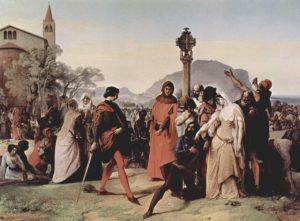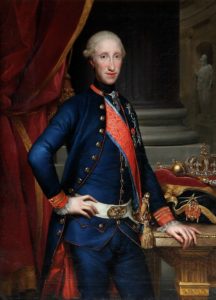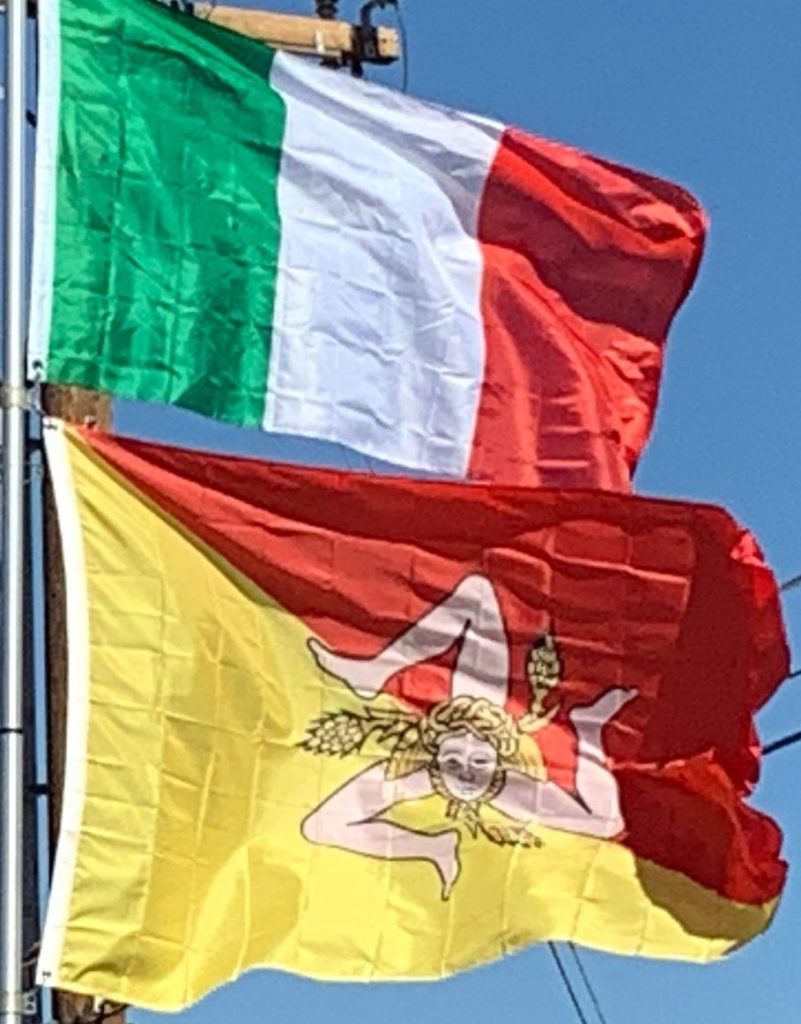
Between the 15th-18th centuries, waves of Greeks from the Peloponnese (such as the Maniots) and Arvanites migrated to Sicily in large numbers to escape persecution after the Ottoman conquest of the Peloponnese. They brought with them Eastern Orthodoxy as well as the Greek and Arvanitika languages to the island, once again adding onto the extensive Byzantine/Greek influence.
The onset of the Spanish Inquisition in 1492 led to Ferdinand II decreeing the expulsion of all Jews from Sicily. The eastern part of the island was hit by very destructive earthquakes in 1542 and 1693. Just a few years before the latter earthquake, the island was struck by a ferocious plague. The earthquake in 1693 took an estimated 60,000 lives. There were revolts during the 17th century, but these were quelled with significant force, especially the revolts of Palermo and Messina. North African slave raids discouraged settlement along the coast until the 19th century. The Treaty of Utrecht in 1713 saw Sicily assigned to the House of Savoy; however, this period of rule lasted only seven years, as it was exchanged for the island of Sardinia with Emperor Charles VI of the Austrian Habsburg Dynasty.
While the Austrians were concerned with the War of the Polish Succession, a Bourbon prince, Charles from Spain was able to conquer Sicily and Naples. At first Sicily was able to remain as an independent kingdom under personal union, while the Bourbons ruled over both from Naples. However, the advent of Napoleon’s First French Empire saw Naples taken at the Battle of Campo Tenese and Bonapartist King of Naples were installed. Ferdinand III the Bourbon was forced to retreat to Sicily which he was still in complete control of with the help of British naval protection.

Following this, Sicily joined the Napoleonic Wars, and subsequently the British under Lord William Bentinck established a military and diplomatic presence on the island to protect against a French invasion. After the wars were won, Sicily and Naples formally merged as the Two Sicilies under the Bourbons. Major revolutionary movements occurred in 1820 and 1848 against the Bourbon government with Sicily seeking independence; the second of which, the 1848 revolution resulted in a short period of independence for Sicily. However, in 1849 the Bourbons retook control of the island and dominated it until 1860.
Italian Unification:
The Expedition of the Thousand led by Giuseppe Garibaldi captured Sicily in 1860, as part of the Risorgimento. The conquest started at Marsala, and native Sicilians joined him in the capture of the southern Italian peninsula. Garibaldi’s march was completed with the Siege of Gaeta, where the final Bourbons were expelled and Garibaldi announced his dictatorship in the name of Victor Emmanuel II of Kingdom of Sardinia. Sicily became part of the Kingdom of Sardinia after a referendum where more than 75% of Sicily voted in favor of the annexation on 21 October 1860. As a result of the proclamation of the Kingdom of Italy, Sicily became part of the kingdom on 17 March 1861.
